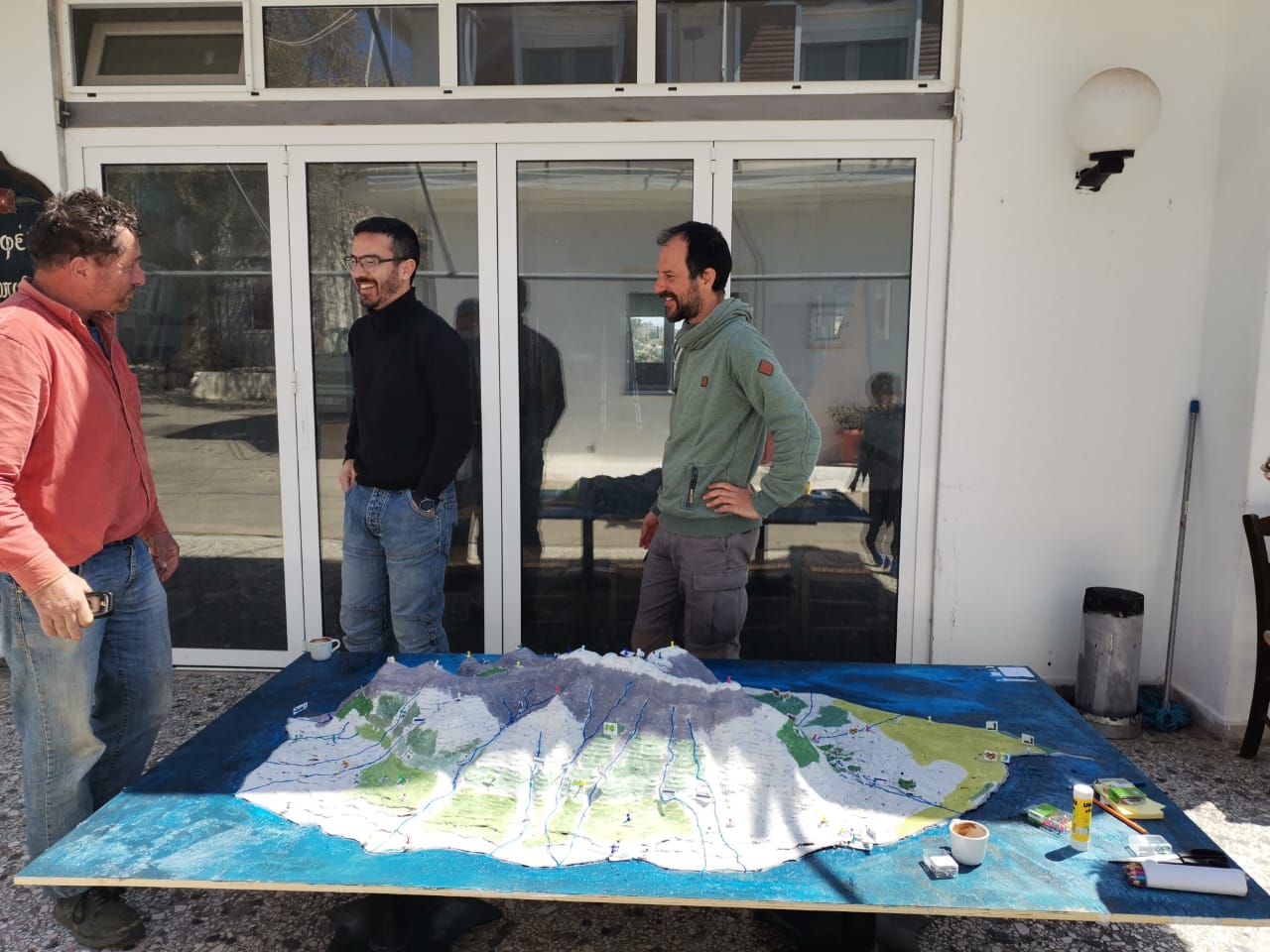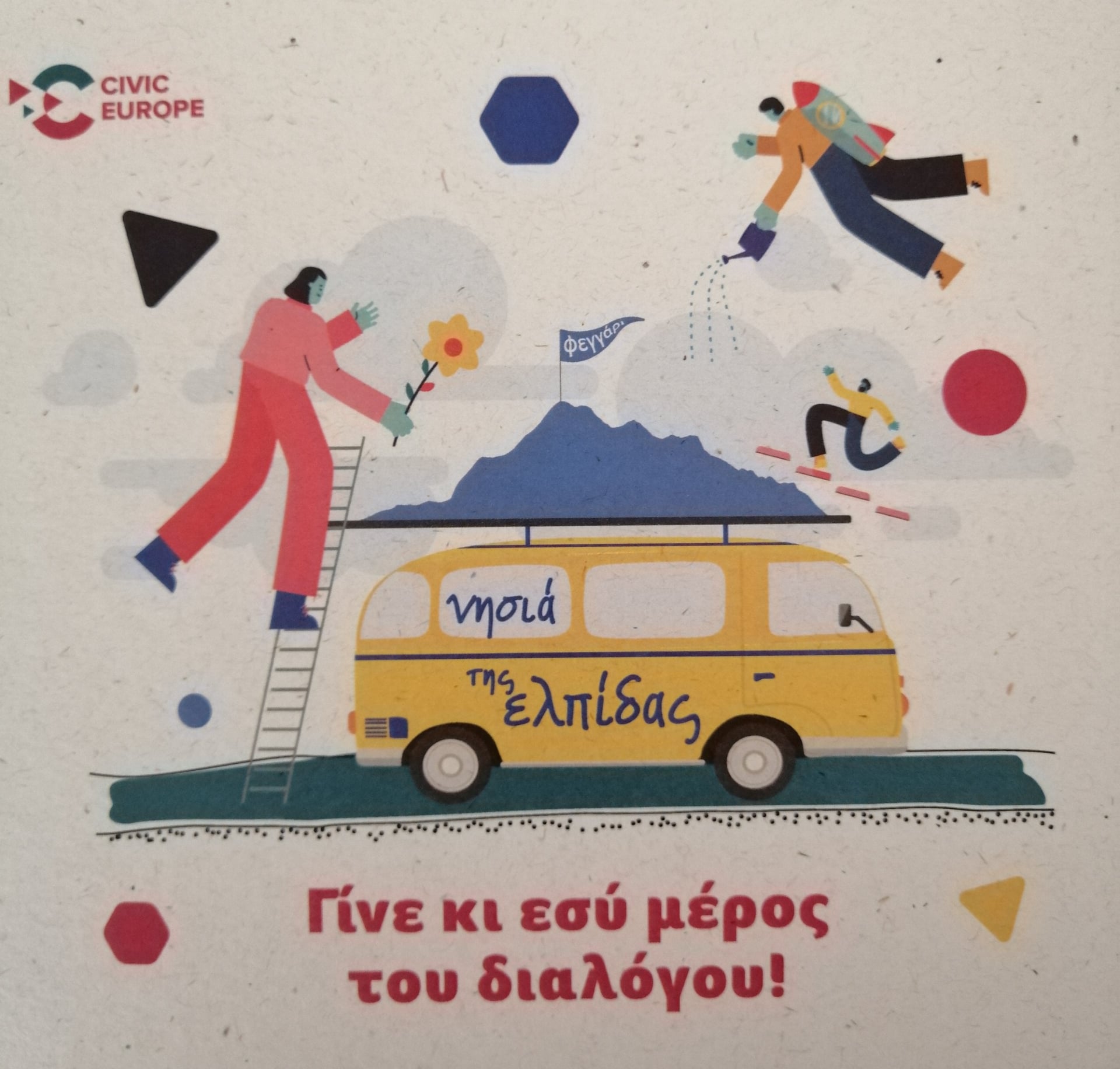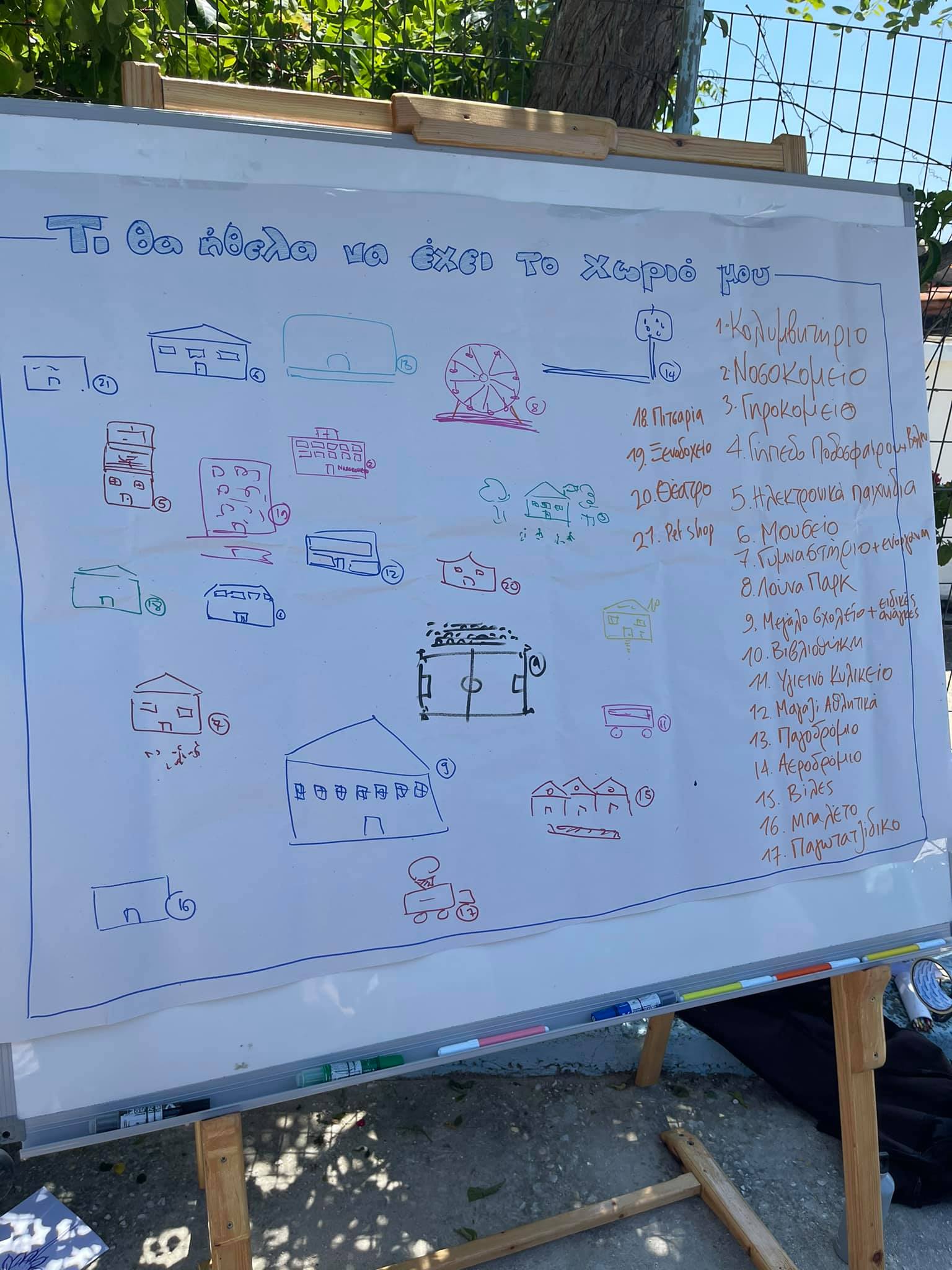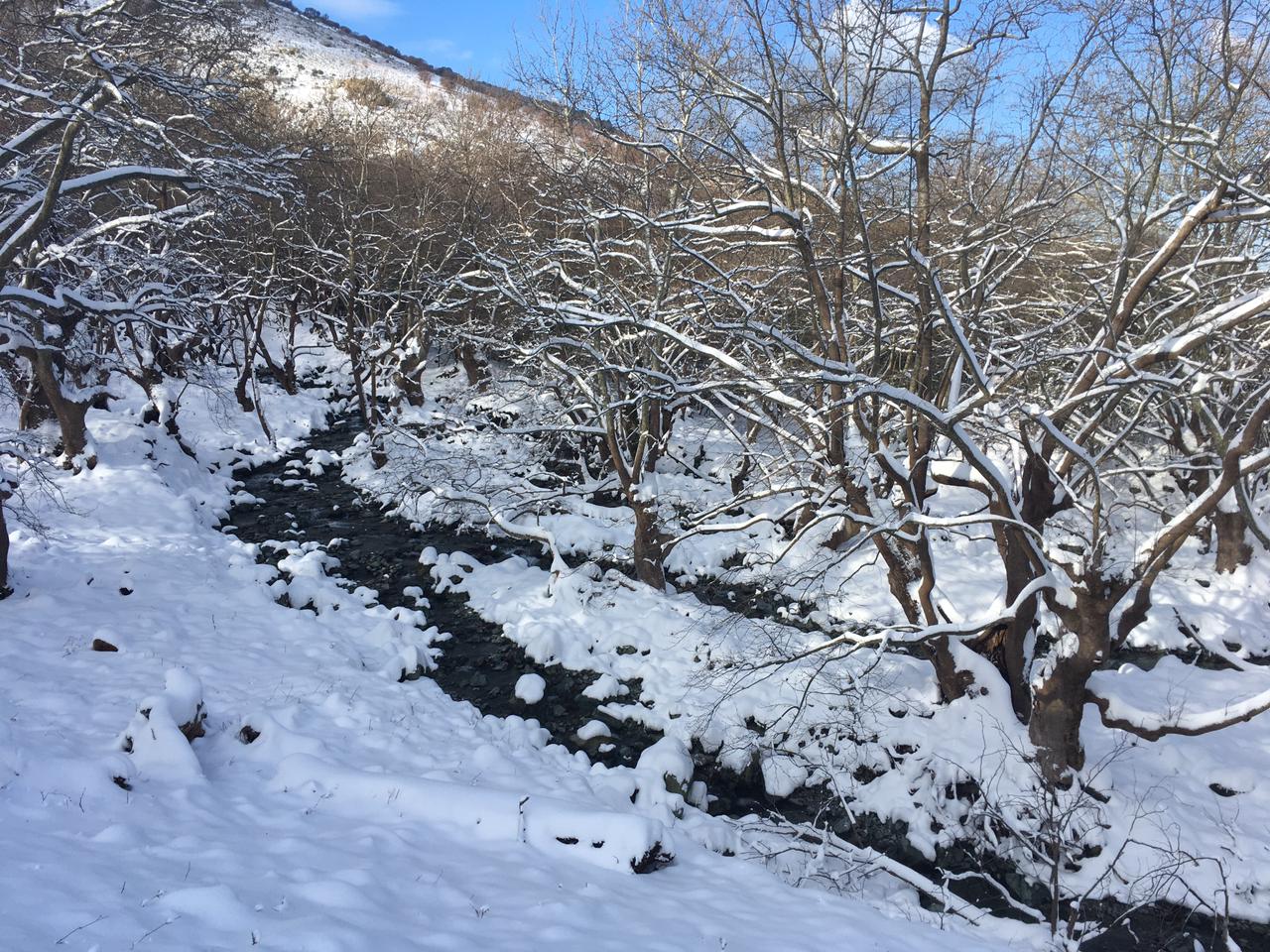Islands of Hope winner
Fostering a culture of democratic dialogue and co-designing a vision for small island development
Creators
Who is behind this?
Who is joining forces?
Sustainable Samothraki
http://sustainable-samothraki.net/
Greece
We combine the know-how of ‘European Village’ on public deliberation with the local context-specific knowledge of ‘Sustainable Samothraki’ and the experience of regular visiting researchers
Idea
Idea pitch
Small islands are renowned sources of natural richness and cultural diversity. Yet their fate is often decided in urban political centres, while community voices, untrained in structured dialogue, are largely bypassed, leading to local conflicts and resignation. Departing from a small Aegean island, we embark on a visionary participatory journey to co-define insular developmental priorities and co-design an open-source toolkit for democratic deliberation for the entire Greek archipelago.
Where will your project idea take place?
Samothraki Island, North-Eastern Aegean Sea, Greece
What is the specific societal challenge faced by this region?
Samothraki is a small mountainous island with unique natural and cultural heritage, at the crossroads of development pathways. Like in many other Greek islands, the local society and environment is directly influenced by decisions made at higher levels, such as the planning of an industrial wind farm at the peak of the mountain, the increasing intervention of global tourism and real estate markets, and EU agricultural policies. Yet, the local community is largely excluded from regional planning deliberations. The lack of the tools and culture of genuine dialogue has led to major conflicts within the community (e.g. about wind farms, tourist development and animal grazing), while the institutional barriers for citizens to influence regional policies has led to feelings of resignation.
Who are you doing it for?
Decisions on insular development are of direct relevance to the entire community of around 3.000 residents. We will engage citizens from all strands of the community, including representatives from local associations, regional bodies, as well as the around 30.000 regular visitors. Since some voices are more dominant, we will especially ensure the active participation of the ‘voiceless’: women, migrants, foreigners, illiterate, and the elderly. Based on our preliminary work, we will especially target representatives from already identified ‘polarized’ groups, e.g. middle-aged male farmers leading a traditional life with little contact to outsiders vs. younger more educated citizens working mostly in tourism services who sometimes perceive the “specialness” of the island as backwardness.
How do you plan to get there?
Implementation steps:
1. Collective identification of key controversial issues, using open dialogue and storytelling, classification of opposing views. Preparation of community space
2. Inclusive stakeholder mapping at various levels (local, regional, national)
3. Capacity building for local action groups (seminars on conflict management, nonviolent communication)
4. Preparation of brochure and newsletter.
5. Deliberative visionary (backcasting) open meetings
6. Cross-feeding workshops with higher level authorities
7. Summer deliberative activities with seasonal residents and frequent visitors
8. Codification of findings, preparation of insular deliberation toolkit
9. Setting up of a local communication structure (e.g. physical space, reactivation of local radio)
10. Final event
What are the expected results?
Our vision of success includes the following:
1. Diverse local views are now clearly mapped and communicated to the community
2. An effort has been made to merge potential convergences and persisting divergences
3. Conflicts are substantially mitigated
4. A culture of community deliberation is established
5. The roadmap to the ‘institutionalization’ of local decisions is chartered and the process is clear
6. The open newsletter has evolved into a local newspaper, and/or the local radio is reactivated
7. A series of local institutions have been set up (meeting point, annual festival)
How does your idea strengthen active citizenship at a local and community level?
First, our idea aims at democratically activating the community in jointly outlining a vision of local insular development, in their own terms, where all voices are equally expressed, respected and appraised. For this we engage in a participatory and visionary democratic dialogue, where conflicts are exposed and mitigated. Second, we tackle one of the major shortcomings of public deliberative processes in Greece, which is usually reduced to higher level stakeholders. Instead, we explicitly try to make deliberation more inclusive and explore ways to incorporate community voices in regional decision making.
Why is this idea important to you?
As residents, or regularly visiting ‘researchers’ in Samothraki for over a decade, we deeply care about this special island and have a long term vision and motivation to help. Over the years of our involvement with the local commons, we have learned that ‘island sustainability’ can only be achieved by combining a concern for the environment with developing a vibrant and democratic community. We strongly believe all insular communities have the right to choose their developmental trajectory. In order to achieve this one needs a culture of respectful dialogue. This is why we say: keep a utopian vision, walk together one step at a time...
€ 50000,-
Total budget
€ 50000,-
Funding requested from Civic Europe
Major expenses
Personnel costs: 27,000€
Travel and accommodation: 6,000€
Project management and administration: 3,000€
Office expenses: 3,000€
Communication and dissemination: 3,500€
Events / Workshops (logistics): 5,000€
Publication costs: 2,500€
What do you need from the Civic Europe community?
We would very much welcome feedback on the overall structure and feasibility of our plan!
Project Journey
Learning from each other
At the end of October we had the opportunity to participate in the Community Meeting in Eger, Hungary and finally meet in person with the other project participants.
During the meeting we had the chance to present our activities and receive valuable feedback, but also to share experiences and learn useful lessons from the other projects, thus develop together. We are grateful for that!
The next months will find us busy preparing a toolkit for public deliberations and participatory design in small islands, where we will document the main learnings and insights from our journey. Stay tuned!
Co-designing island futures
It is with great pleasure that we see current restrictions slowly receding and community interaction increasing!
Last month we have produced and circulated a thoughtfully designed online questionnaire about life on Samothraki, in order to gather local views about what makes life special but also challenging on the island, as well as collect opinions about the future direction of key sectors of the economy, such as tourism, and desired infrastructure.
Additionally, for two consecutive Sundays we organized a local festival “Limnidia 2021”, owing its name to our activated community space!

During the first day, we organized two participatory planning workshops, producing an ‘emotional map’ of the island, as well as envisioning and constructing futurist versions of Samothraki, and producing narratives from the future. The day was complemented with art workshops for kids, various social games for young and old, plenty of food and drinks and last but not least an open air cinema.

On day 2, we jointly discussed the results of the questionnaire, so far, and based on these we designed diverse scenarios for Samothraki 2041, and started generating a roadmap about how to get there.
After supporting our loving friends from Zathay social cooperative in their youth exchange program Together active in Europe II, we will then head into the summer break spending the following weeks processing the plethora of very stimulating input we gathered over the past days,
..See you in autumn!
Moving ahead
With spring slowly giving way to early summer, things are looking even brighter both for the project and the island as a whole. We have managed to get through these extra-ordinary times in common, and jointly make steps and reflections on what constitutes a vibrant island community.
Over the course of the past months we invited small groups of people in our hospitable community space and discussed issues of importance, visions but also concerns about their life on the island.

Moreover, with the use of our 3D model map of Samothraki, as well as a neatly designed information flyer produced by Eleni Karafylli, we visited several of the villages, discussed and listened to local citizens about the issues that makes their place unique, and topics that they would like improved.

After a kind invitation, we also visited the primary school in Lakkoma, for an interactive workshop with the children, playing cooperation games, and jointly constructing their ideal village!



Finally, the weekly Nonviolent Communication workshop has evolved into a weekly meeting where people have the chance to share, listen and be listened and discuss issues of mutual concern.
And the journey goes on…
Setting the scene
Islands of hope first and foremost aims at supporting the people of Samothraki to collectively express their desires in developing an inspiring vision for their island. Our team has already settled on Samothraki and is getting informed about longstanding, as well as current issues. We not only listen to the people but we also experience with them the challenges, and beauties, of living on an island.

Despite current Covid-19 restrictions, a series of activities and events has already taken place:
- An online introduction session was conducted and sparked interest within the community, attracting young and old striving for positive change.
- A weekly Nonviolent Communication education workshop for local citizens is currently underway, for 8 consecutive weeks, by NVC expert Giorgos Tsitsirigos.
- Thanks to a fruitful collaboration with Alter Ego Basement, we have been able to set up a warm and hospitable community space at Limnidi.
- A 3D participatory mapping workshop led by Chrysostomos Galanos was successfully concluded. The beautiful map produced will form the basis and provide the context for ongoing deliberations.


We are now in the process of collecting ideas for the public dialogues, and invite everyone to our community space for a series of thematic cafes!
For more information, follow us on: http://islandsofhope.gr/
Write comment